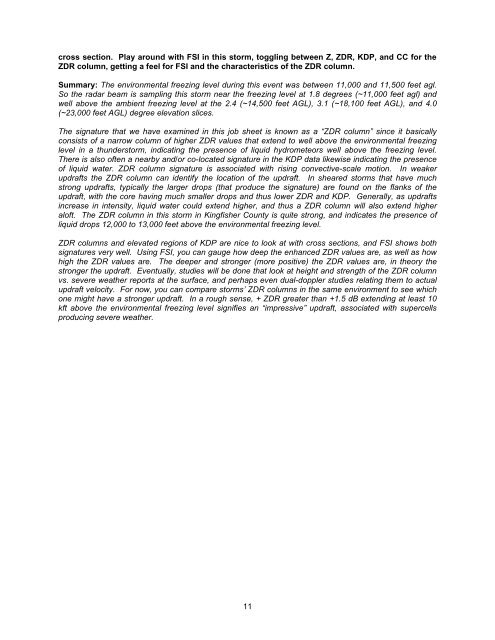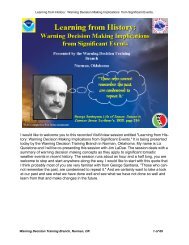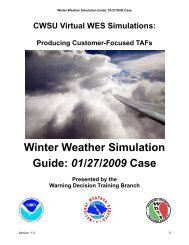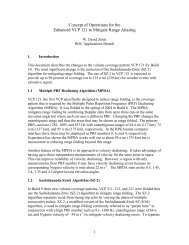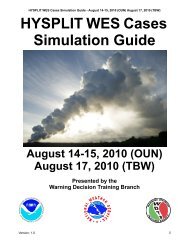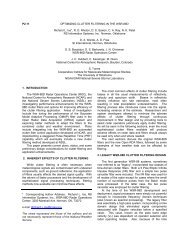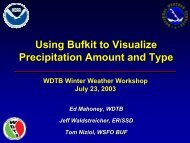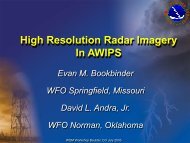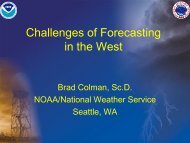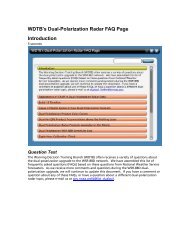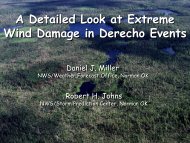Dual-Polarization Radar Data Guide
Dual-Polarization Radar Data Guide
Dual-Polarization Radar Data Guide
- No tags were found...
You also want an ePaper? Increase the reach of your titles
YUMPU automatically turns print PDFs into web optimized ePapers that Google loves.
cross section. Play around with FSI in this storm, toggling between Z, ZDR, KDP, and CC for theZDR column, getting a feel for FSI and the characteristics of the ZDR column.Summary: The environmental freezing level during this event was between 11,000 and 11,500 feet agl.So the radar beam is sampling this storm near the freezing level at 1.8 degrees (~11,000 feet agl) andwell above the ambient freezing level at the 2.4 (~14,500 feet AGL), 3.1 (~18,100 feet AGL), and 4.0(~23,000 feet AGL) degree elevation slices.The signature that we have examined in this job sheet is known as a “ZDR column” since it basicallyconsists of a narrow column of higher ZDR values that extend to well above the environmental freezinglevel in a thunderstorm, indicating the presence of liquid hydrometeors well above the freezing level.There is also often a nearby and/or co-located signature in the KDP data likewise indicating the presenceof liquid water. ZDR column signature is associated with rising convective-scale motion. In weakerupdrafts the ZDR column can identify the location of the updraft. In sheared storms that have muchstrong updrafts, typically the larger drops (that produce the signature) are found on the flanks of theupdraft, with the core having much smaller drops and thus lower ZDR and KDP. Generally, as updraftsincrease in intensity, liquid water could extend higher, and thus a ZDR column will also extend higheraloft. The ZDR column in this storm in Kingfisher County is quite strong, and indicates the presence ofliquid drops 12,000 to 13,000 feet above the environmental freezing level.ZDR columns and elevated regions of KDP are nice to look at with cross sections, and FSI shows bothsignatures very well. Using FSI, you can gauge how deep the enhanced ZDR values are, as well as howhigh the ZDR values are. The deeper and stronger (more positive) the ZDR values are, in theory thestronger the updraft. Eventually, studies will be done that look at height and strength of the ZDR columnvs. severe weather reports at the surface, and perhaps even dual-doppler studies relating them to actualupdraft velocity. For now, you can compare storms’ ZDR columns in the same environment to see whichone might have a stronger updraft. In a rough sense, + ZDR greater than +1.5 dB extending at least 10kft above the environmental freezing level signifies an “impressive” updraft, associated with supercellsproducing severe weather.11


